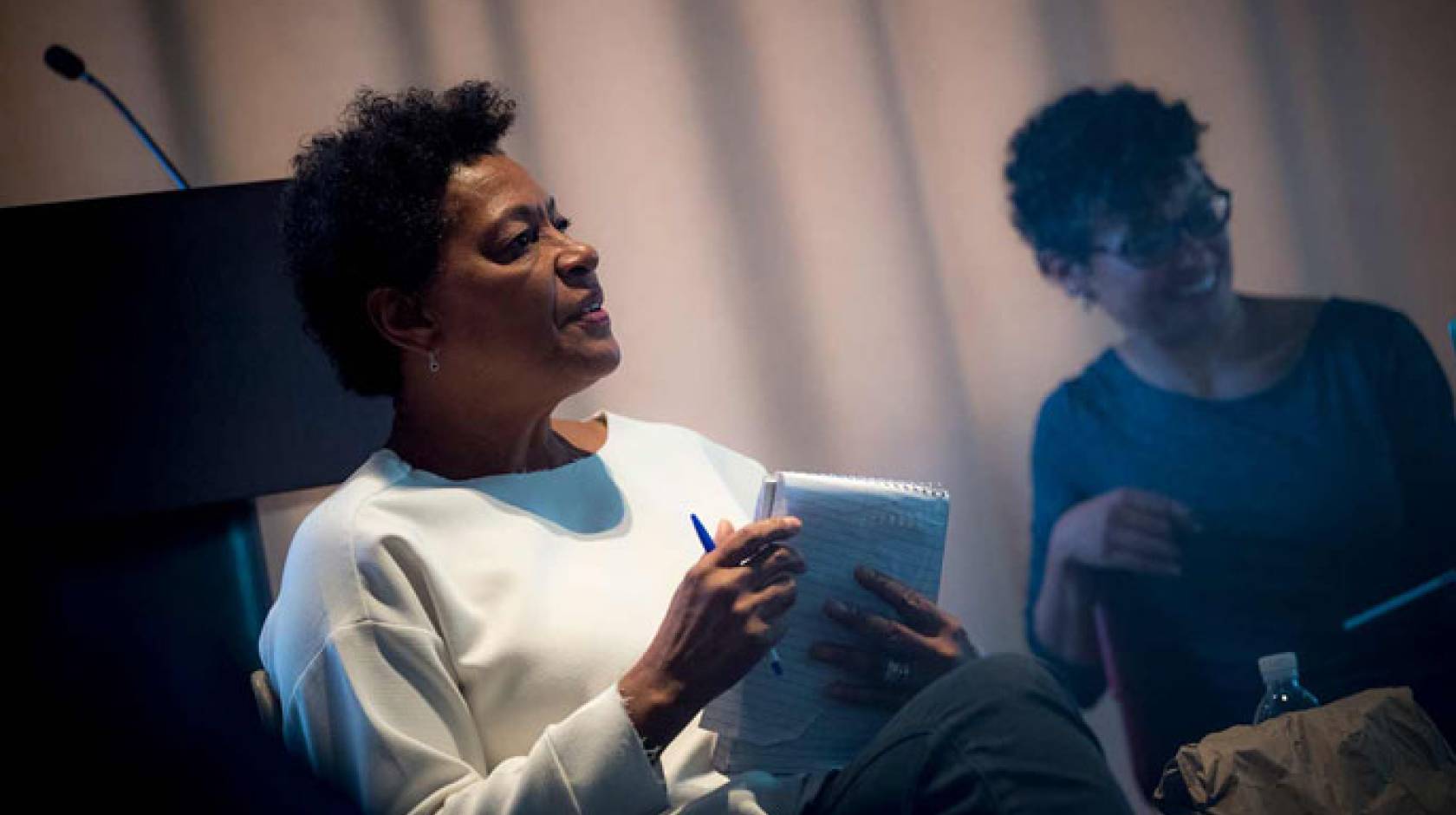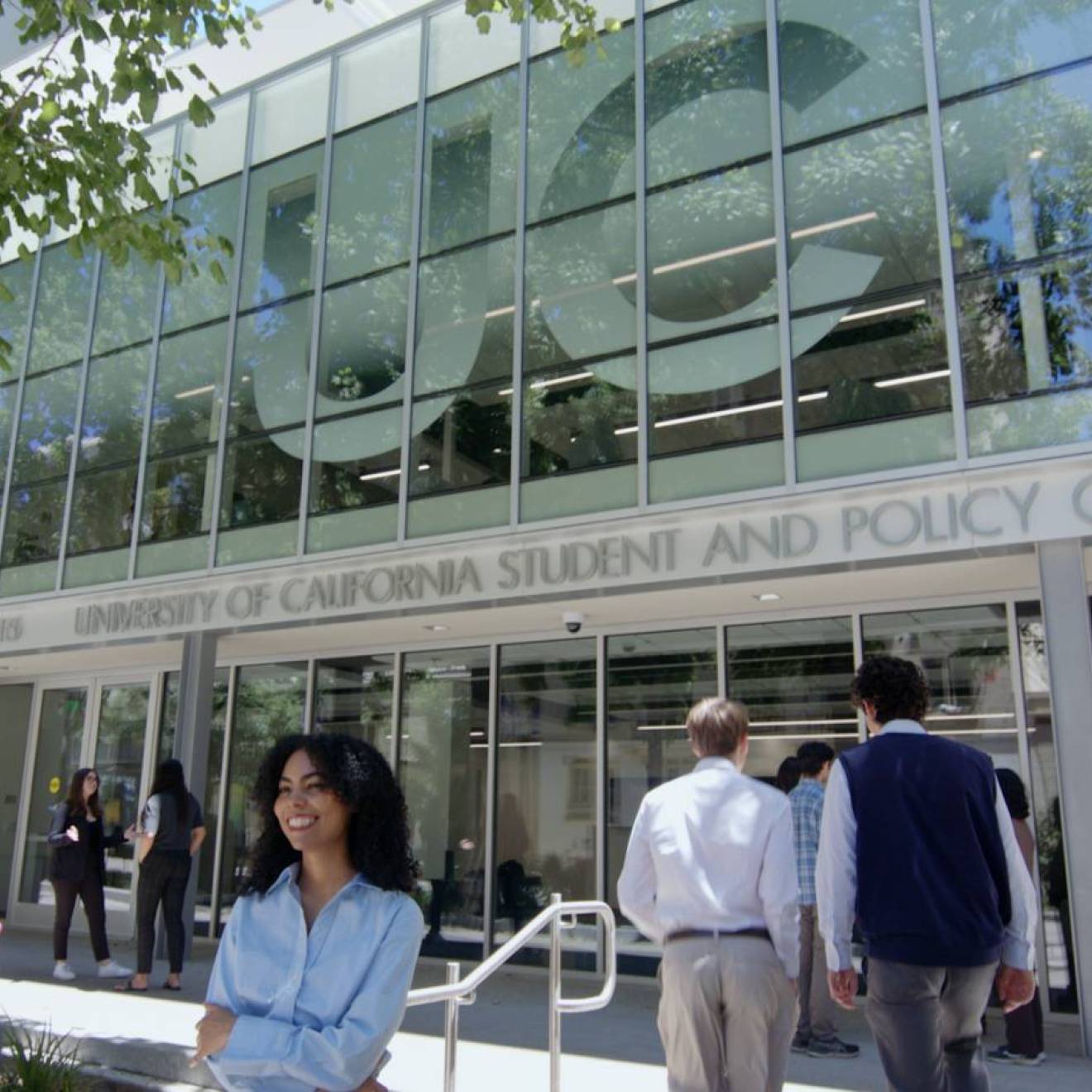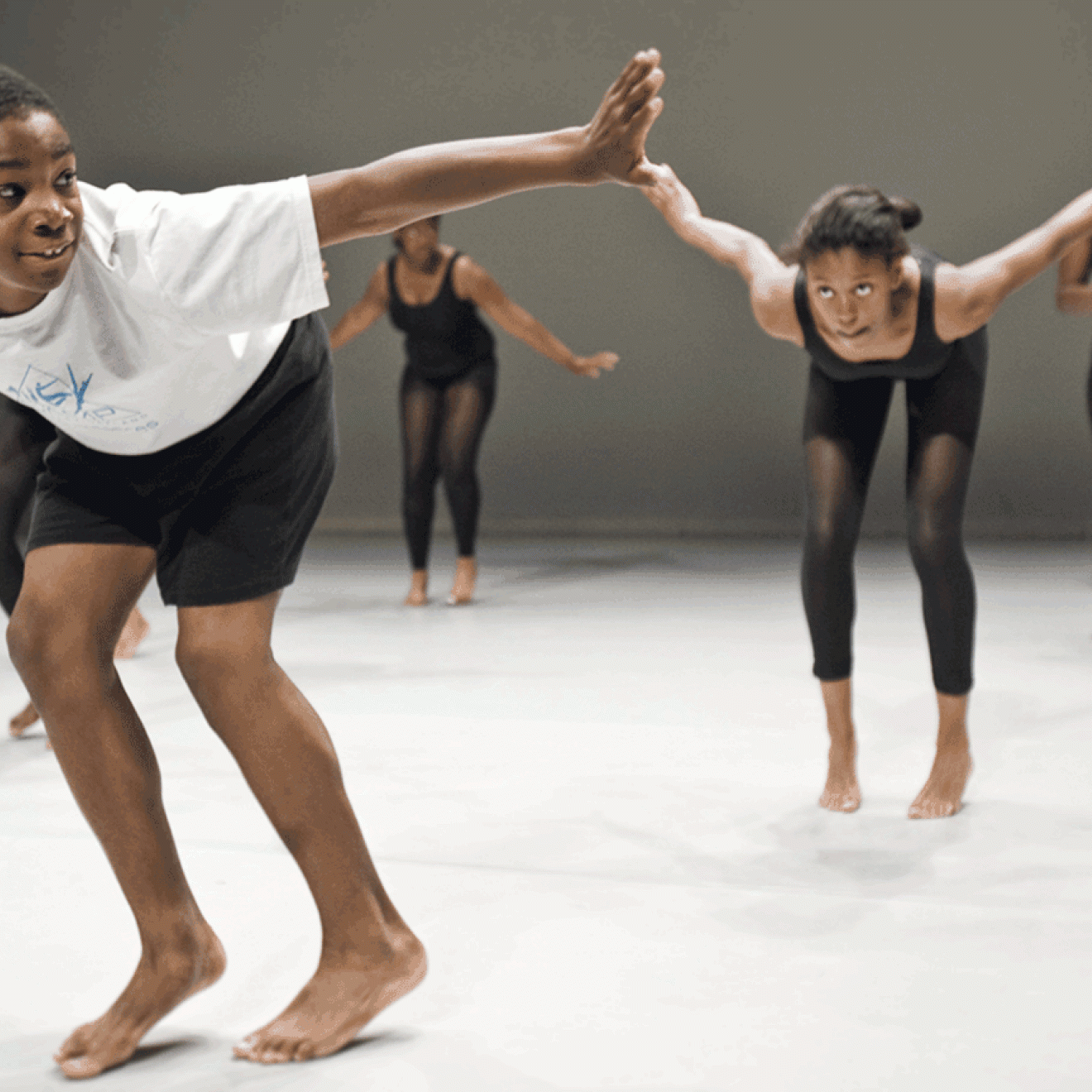Anthony King, UC San Diego

UC San Diego welcomed the return of celebrated artist Carrie Mae Weems Nov. 6-7, a distinguished alum who received her MFA from the Department of Visual Arts in 1984. Considered one of the most influential contemporary artists, Weems encouraged curiosity, finding purpose and deep engagement.

Credit: Erik Jepsen/ UC San Diego Publications
“One of the things I really love about being at a university is in hearing what people are up to and thinking about,” Weems said to open her public talk at the Price Center Theater: a full house of students, faculty members and community. “I’m really grateful to be back.”
Weems — whose last public appearance at UC San Diego was in 2015 — also sat in small, private conversation with students across campus. She was inquisitive, spending less time discussing her own practice and more time listening to the concerns and research of undergraduate and graduate students from the Department of Visual Arts, as well as students in the university’s Black Studies Project.
“I’m interested in the scope of work that you’re doing, and the questions that you’re asking in this moment. What are you really interrogating?” she said. “Sometimes trying to answer that question is the most difficult thing you can do over the course of, not only your student life, but your life. You have to follow every single instinct you have.”
Weems said exploring these questions does not come quickly nor easily, but the university can be an “enormous resource” where students find purpose and meaning. She encouraged them to ask how they could use the system to get what they needed while here.
“Being able to talk through your ideas with somebody, whether it’s with you in your journal or you and your professor — because they’re there for you — is so important. If you can process and begin to articulate [these questions], you can … get to where you need to go quicker. You have to keep working.”

Credit: Wesley Ruan/ UC San Diego Publications
A 2017 UC San Diego Outstanding Alumni honoree, Weems has received numerous awards, grants and fellowships throughout her career, including the prestigious Rome Prize, National Endowment of the Arts award and, in 2013, a MacArthur “Genius” Fellowship. She has been recognized for her commitment to the Department of State’s Art in Embassies program, and received the Congressional Black Caucus Foundation’s Lifetime Achievement Award, a BET Honors award for visual arts and a Lucie Award for fine art photography, among many others. She was one of four artists honored at the Guggenheim’s 2014 International Gala.
“My primary project is really the deconstruction around notions of power. That’s really the only thing I’m interested in exploring,” she said. “I make the work because there is something that I really need to get to, that I need to experience [and] that I need to know.”
Weems has investigated family relationships, cultural identity, sexism, class, political systems and the consequences of power. For more than 30 years, she has developed a complex body of art employing photographs, text, fabric, audio, digital images, installation and video, and said she has many curiosities about collaboration, art and art practice.
“I think my work belongs to the world,” she said. “Part of what I hope to do is to point people in a certain kind of direction.”

Credit: Erik Jepsen/ UC San Diego Publications
While Weems said she rarely reads reviews of her work, she is deeply determined to be engaged and keenly aware of her place in the canon, not only as an artist, but as a black, woman artist, too. Multiple students asked about ethnic and cultural representation in both her art practice and their own.
“If you’re always only talking about the questions of race in relationship to the work, then you’re always segregating it from the larger field. It’s always still considered the ‘other’ thing,” she said. “This becomes really important because it affects the way in which the work is viewed, it affects the way in which it is written about and it affects the way the work is sold in the public.”
She gave hope that students today would shape the future narrative, asking how they could take control and participate as actively engaged citizens: “We have an amazing future ahead. Your voices, as people of color, will become much more profound in the next 10 to 20 years, in a way that it has not been heretofore. Think of it as a great challenge: how do you want to look at the past as you move into the future?”
Weems’ visit anchors a dynamic lineup of guests from the Department of Visual Arts meant to engage and inspire an active student population and artistic community on campus, as well as to broaden the scope, appeal and range of art throughout greater San Diego.
“It really is important to step away and engage with the larger world and to pay attention to what others are doing: what other artists are doing, what other writers are doing, what other filmmakers are doing, what your friends and your family are doing,” she said. “In one way or another, the only thing we’re interested in is some form of truth. That’s why we’re doing this.”

